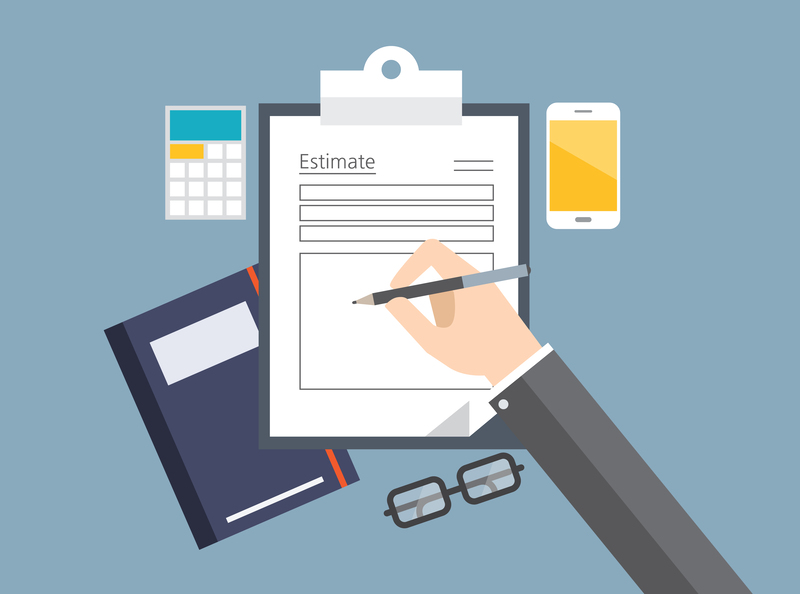Proven tactics for smooth bed and mattress moving
Posted on 13/06/2025
Proven Tactics for Smooth Bed and Mattress Moving
Moving homes is both an exciting and challenging process, especially when it comes to handling large, bulky furniture like beds and mattresses. Most households underestimate the logistics involved in mattress relocation and bed disassembly. This comprehensive guide offers expert, SEO-optimized advice on smooth bed and mattress moving, revealing practical tips, pro techniques, and common pitfalls to avoid. Read on for an optimized, reader-friendly look into the best techniques for mattress and bed frame transportation.

Why Proper Bed and Mattress Moving Matters
Beds and mattresses are significant investments--both financially and in terms of comfort. A mishandled move can result in damages, stains, warping, or loss of warranty. Poor relocation of these large items can also lead to injuries or property damage. Understanding professional mattress moving guidelines ensures longevity and keeps your move hassle-free.
Potential Risks in Moving Beds and Mattresses
- Physical Damage: Tearing, puncturing, or staining the mattress or bed frame.
- Structural Issues: Warping or breaking bed slats or box springs.
- Injury: Heavy lifting can cause back and muscle strains.
- Warranty Voids: Improper handling may nullify manufacturer warranties.
Preparation: The Foundation of Seamless Bed and Mattress Moving
Proper preparation is half the battle won. A smooth move starts long before moving day. Here's how to prep your mattress and bed frame for safe transit:
1. Assemble Essential Tools and Supplies
- Mattress bag or plastic wrap for protection
- Moving straps or lifting slings
- Furniture blankets or pads
- Bungee cords or rope
- Screwdrivers, wrenches, or Allen keys for disassembly
- Ziploc bags and markers for small hardware organization
- Hand truck (dolly) for easier movement
- Gloves for better grip and protection
2. Measure Doorways and Pathways
Measure your mattress, bed frame, and all passages--doorways, hallways, staircases--to ensure that you have enough clearance for moving. This step prevents last-minute snags that can scratch walls or jam large objects.
3. Clean and Strip the Bed
Remove all bedding, pillows, and accessories. Take a few minutes to vacuum or dust the mattress and bed frame. Clean, dry surfaces ensure easier handling and prevent the transfer of dirt or pests.
4. Disassemble the Bed Structure
- Take apart the frame: Separate the headboard, footboard, side rails, and slats if possible.
- Keep hardware organized: Place screws, bolts, and washers in labeled bags or containers. Tape these to the largest bed component for easy access at your new place.
- Mark pieces: For complex frames, number or label each piece for faster, easier reassembly.
- Remove drawers or storage units from under-bed frames to lighten the load.
Packing: Ensuring Safe Mattress and Bed Transportation
1. Proper Mattress Packing Techniques
- Bag it: Use a high-quality mattress moving bag or heavy-duty plastic wrap available at moving supply stores. This shields the mattress from moisture, dust, and tears.
- Seal it tight: Use packing tape to secure the ends of the mattress bag, preventing slippage or debris entry.
- Don't bend if not allowed: Check with your mattress manufacturer if it can be safely bent or folded. Memory foam and latex mattresses may tolerate bending, but innerspring or hybrid types can be permanently damaged by excessive flexing.
2. Packing and Protecting the Bed Frame
- Wrap with moving blankets: Protect wood, metal, or upholstered surfaces from dings and scratches.
- Bundle slats and rails: Use tape or rope to keep similar parts together for organized unpacking later.
- Pad hardware: Securely tape Ziploc bags with hardware to larger bed pieces to avoid loss.
Lifting and Moving: Safe Techniques for Heavy Mattress Moving
1. Enlist Help
Bed frames and mattresses are cumbersome for one person to manage. Enlist a friend, family member, or professional mover to help. This supports better balance, prevents injuries, and avoids damage.
2. Use Proper Lifting Techniques
- Bend at the knees, not your waist, and lift with your legs to reduce risk of back strain.
- Keep the mattress or frame close to your body while moving.
- Take your time and communicate when moving with a partner. Set the mattress down if needed--never rush.
3. Utilize Moving Equipment
- Hand truck or dolly: Perfect for transporting heavy mattresses and awkward bed parts effortlessly, especially over longer distances or stairs.
- Sliders or lifting straps: These reduce friction between the mattress and floors and distribute weight for easier lifting.
4. Beat the Corners and Stairway Challenge
Navigating tight corners or staircases is one of the trickiest aspects of moving beds and mattresses.
- Tip the mattress on its side for easier maneuvering.
- Use cardboard sheets on tight corners to protect walls and the mattress cover.
- Move slowly and plan your route before entering narrow spaces.
Loading for Transport: Secure Relocation for Your Bed and Mattress
1. Position the Mattress Carefully
- Flat is best: For most mattress types (especially spring, hybrid, or waterbeds), lay flat in the moving vehicle to prevent unhealthy sagging or distortion.
- Memory foam flexibility: Some foam mattresses are flexible and can be transported on their side if needed, but check manufacturer guidelines.
- Avoid stacking heavy items on top: Mattresses can be permanently misshapen if compressed under other furniture.
2. Secure the Bed Frame
- Use bungee cords or rope to prevent sliding and banging during transit.
- Place protective materials between pieces to absorb bumps.
- Keep all bed components together in one location of the moving van for simple offload.
Unloading and Reassembly: Completing Your Stress-Free Bed and Mattress Move
1. Start with the Frame
At your destination, unload and reassemble the bed frame first, using your labeled pieces and stored hardware.
- Work systematically: Follow your labels and any original assembly instructions for efficiency.
- Tighten hardware: Check for stability and tighten all bolts and screws before placing the mattress.
2. Mattress Placement and Inspection
- Remove protective wrapping: Ensure there's no moisture or debris inside before setting up.
- Inspect for damage: Look for signs of rips, stains, or structural warping before placing the mattress on the frame.
- Aerate if needed: Let the mattress air out for a couple of hours if it has absorbed odors or moisture.
Special Tips for Moving Different Bed and Mattress Types
Memory Foam
- Roll up or fold gently (only if recommended by the manufacturer).
- Always use a protective bag to guard against tearing.
- Allow 24-48 hours to regain shape after move.
Hybrid or Innerspring
- Never fold or bend.
- Move and transport flat whenever possible.
- Protect with heavy-duty plastic and blankets.
Adjustable Beds
- Unplug and detach electronics before handling.
- Follow the manufacturer's instructions to avoid voiding warranties.
- Remove and label all cabling and remote controls.
Platform or Storage Beds
- Remove drawers, bins, or storage units before the move.
- Disassemble modules or large sections for easier transport.
- Bundle and label all small parts.
Should You Hire Professional Bed and Mattress Movers?
While the DIY approach is possible, complex moves or high-value furniture can benefit from hiring experienced furniture movers. Professional movers possess expertise, equipment, and insurance to safeguard every component of your bed and mattress.
Pros of Hiring Professionals
- Reduces risk of injury and furniture damage.
- Saves time and effort, especially for multi-story homes.
- Access to commercial-grade moving equipment.
- Insurance coverage for high-value items.
Cons of Professional Services
- More expensive than DIY moves.
- Less flexible on scheduling compared to working solo.

Common Mistakes to Avoid for Smooth Bed and Mattress Relocation
- Not measuring spaces: Failing to ensure beds and mattresses will fit through doors and stairways.
- Improper wrapping: Leading to stains, tears, and odor absorption.
- Rushing the move: Increases risk of injury or breakage.
- Stacking heavy items on top: Deforms mattresses.
- Disorganized hardware: Losing screws or bolts makes reassembly a nightmare.
Conclusion: Key Takeaways for Stress-Free Bed and Mattress Moving
Successful bed and mattress moves come down to careful preparation, organized packing, safe lifting, and thoughtful unpacking. By following these proven tactics for mattress and bed moving, you dramatically reduce the risk of damage, discomfort, or hassle. Whether you're moving across town or cross-country, implementing these steps will save time, money, and many headaches.
- Invest in mattress protection and high-quality moving supplies.
- Disassemble and label components meticulously.
- Use the right lifting technique and always get help.
- Transport mattresses and frames with care -- secure them well.
- Carefully reassemble for a good night's sleep in your new home.
Ready to make your move easier? Apply these proven tactics for smooth bed and mattress moving--and enjoy a restful, stress-free transition to your new space!



